

Explore Italy by place | region | time period
The Age of new people in Italy » Capestrano (L'Aquila, Abruzzo)

In 1934, a farmer accidentally found a female torso and fragments of a statue while he was working his vineyard in the area Cinericcio (from cenere, ash) near Capestrano village. Here, subsequent archaeological investigations unearthed an Iron Age necropolis of an ancient town, Aufinum (or Ofena). About thirty incineration and burial graves dating back to VI-V BCE were discovered. That would explain why has been used that name for the area for several centuries.
The ancient town Aufinum is located on the summit of the Saint Antonino-Collelungo hill, and is mentioned in Pliny the Elder, who lists the Aufidenates Cismontani among the Vestini communities. It is claimed that they were united with the Peltuinates, but it is unclear whether they were as a town hall or as a locality.
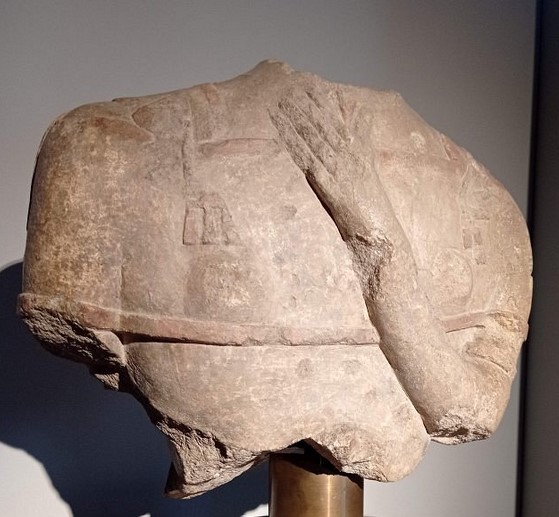
We now come to the fourth region, which includes the most valiant probably of all the nations of Italy. Upon the coast, in the territory of the Frentani, after the river Tifernus, we find the river Trinium [now the Trigno], with a good harbour at its mouth, the towns of Histonium, Buca, and Ortona, and the river Aternus [now the Pescara]. In the interior are the Anxani surnamed Frentani, the Higher and Lower Carentini, and the Lanuenses; in the territory of the Marrucini, the Teatini [now Chieti]; in that of the Peligni, the Corfinienses, the Superaequani, and the Sulmonenses; in that of the Marsi, the Anxantini, the Atinates, the Fucentes, the Lucenses, and the Marruvini; in that of the Albenses, the town of Alba on Lake Fucinus; in that of the Aequiculani, the Cliternini, and the Carseolani; in that of the Vestini, the Angulani, the Pinnenses, and the Peltuinates, adjoining to whom are the Aufinates Cismontani; in that of the Samnites, who have been called Sabelli, and whom the Greeks have called Saunitae, the colony of old Bovianum, and that of the Undecumani, the Aufidenates, the Esernini, the Fagifulani, the Ficolenses, the Saepinates, and the Tereventinates; in that of the Sabini, the Amiternini, the Curenses, Forum Decî, Forum Novum, the Fidenates, the Interamnates, the Nursini, the Nomentani, the Reatini, the Trebulani, both those called Mutusci and those called Suffenates, the Tiburtes, and the Tarinates.
- Pliny the Elder, The Natural History, 3.17

The Warrior of Capestrano dates back to the 6th century BCE. It was found in the territory of the Vestini, an ancient Sabine tribe, which inhabiting the eastern and northern parts along the Aternus River (modern Aterno) in central Italy. The Vestini allied with the Romans in 302 BCE and joined the Social War (90–88 BCE) against Roman rule, and, as a consequence, they obtained Roman citizenship.
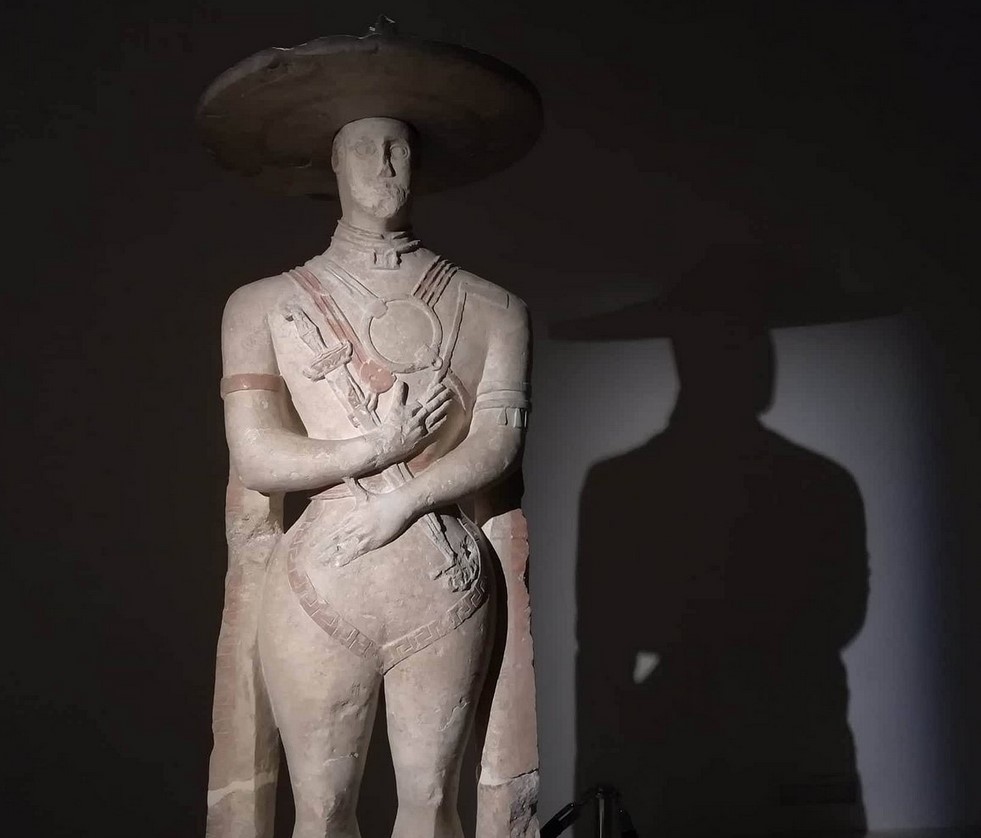
The statue stands 209 cm and was carved out of a single block of Majella stone. Evidence suggests originally painted and shows a Picene warrior with his arms crossed in the front: beneath the kardiophylax there are a long sword decorated with anthropomorphic and zoomorphic friezes, and a knife. The statue has other weapons (spears, javelins with throwing loops, and axes) and a black plate with a broad hinged band.
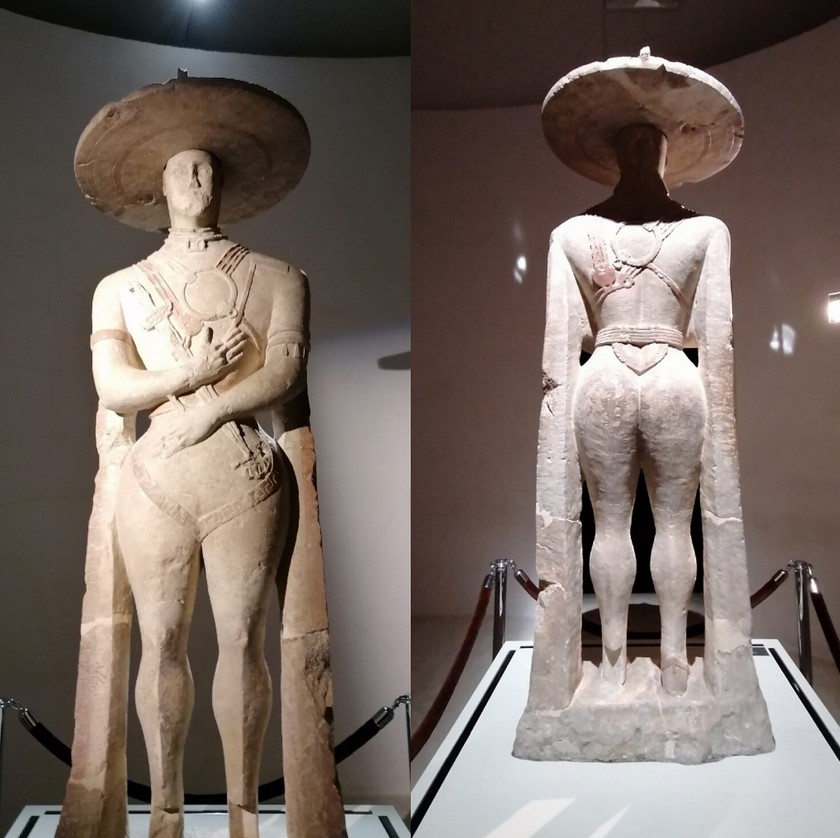
The kardiophylax, also known as disc armor, was a protective piece worn over the bust. there are one in front and one behind. They are a kind of rigid, small-sized armor, leather or metal. Usually they are circular or oval and were placed to protect the heart (hence the name) or, when larger, to protect the chest and abdomen.
This type of armor was commonly used by pre-Roman Italic peoples of central Italy, particularly the Samnites, Picentes, and Umbrians.
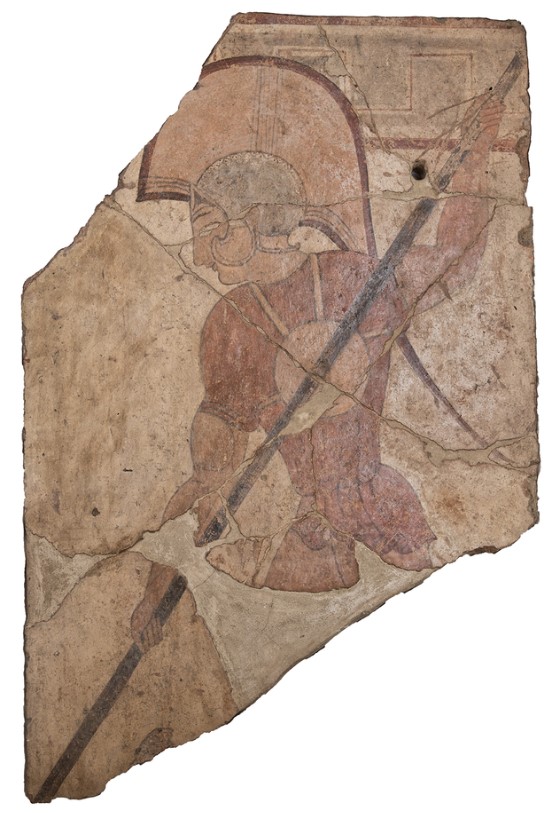
Most of the clothing and equipment of the statue is Etruscan and Italic clothing. He wears a distinctive wide-brimmed parade helmet with a crest of feathers, and also a mitra, a short apron covering the back.
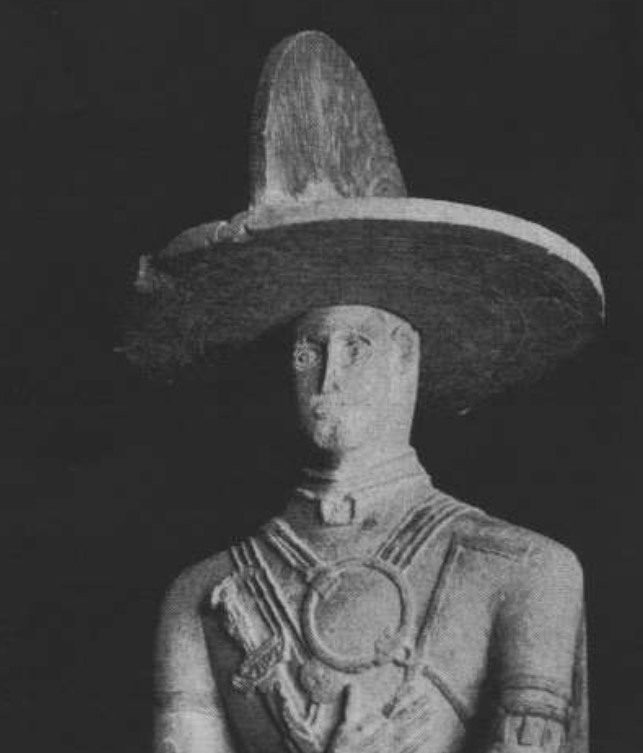
Two pillars were used to laterally frame the statue. The statue wears sandals, not shoes, with blades. Perhaps the addition of garments may have been designed to make the statue seem larger and more powerful.
The unearthed figure, shrouded in the mists of time, raises many questions. Is it a warrior or a king?
Carved across its body are swords, daggers, and other weapons. Another enigma: the presence of a mask etched onto its face. Perhaps it's a death mask.
What is certain is that the statue dates to the pre Roman period when Abruzzo was inhabited by different tribes. Perhaps he was an warrior who was likely honored after death through this sculpture, or was the king he epigraph identifies an Italic king, Nevio Pompuledio.
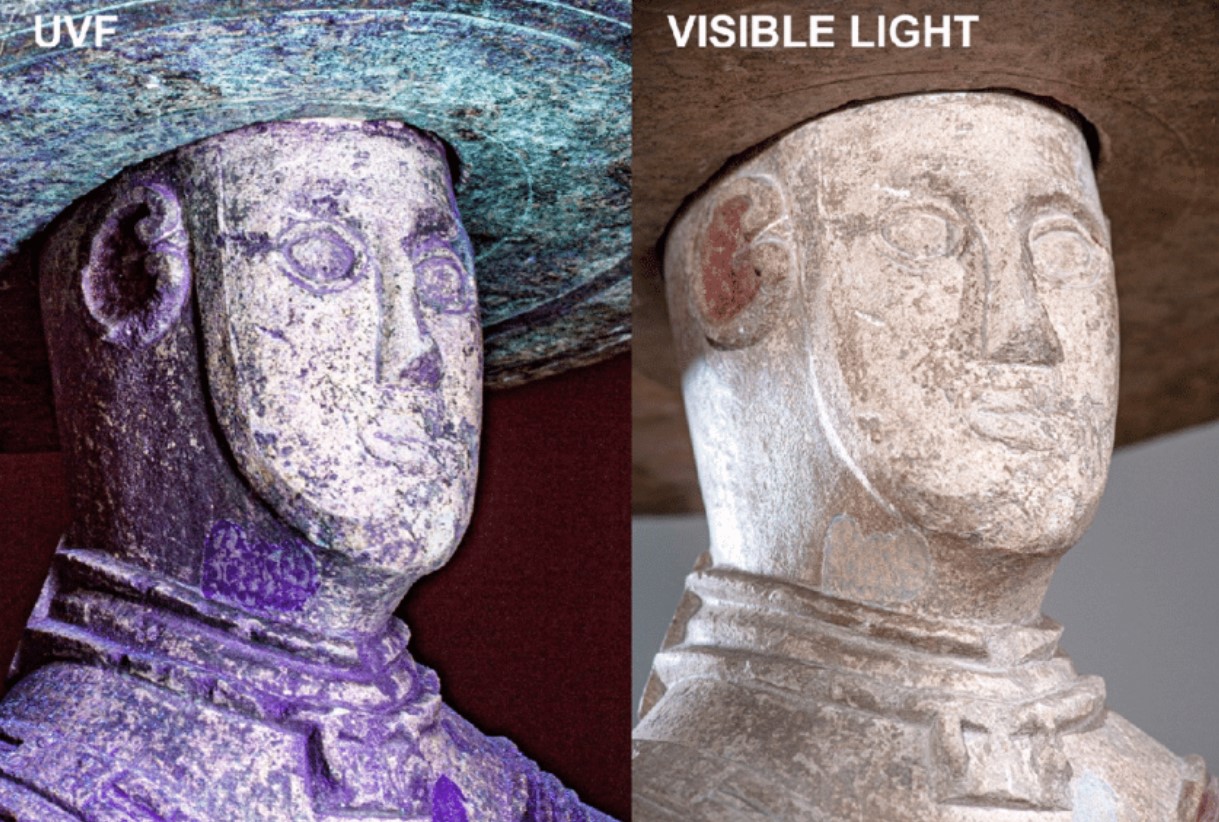
The figure has swords, daggers and other weapons carved onto its body. Another mystery is the presence of a mask which is carved onto its face. Perhaps it is a death mask. What is certain is that the statue dates to the pre-Roman period when Abruzzo was inhabited by different tribes, and its epigraph nominates the Italic king Nevio Pompuledio. Thus, he was likely a warrior honored after death through this sculpture, or was the king.

The figure rests on a pedestal and is supported by two side pillars, on which are engraved spears. On the left support there is an inscription in picena language:
MA KUPRí KORAM OPSÚT ANI{NI}S RAKINEL?ÍS? POMP?[ÚNE]Í
Aninis had this statue made most excellently for Nevio Pompuledio
.
It is not clear whether Aninis was the sculptor or the one who commissioned to make the statue for the king, and not even if the statue was the king or a warrior of the king.
However, the epigraph identifies an Italic king, Nevio Pompuledio. We know that the statue was subject to a damnatio memoriae because when it was found, the legs were cut clean with precision.
In order to know more:
- Wikipedia: [1]
- The Natural History. Pliny the Elder. John Bostock, M.D., F.R.S. H.T. Riley, Esq., B.A. London. Taylor and Francis, Red Lion Court, Fleet Street. 1855.
This page was last edited on 24 June 2024
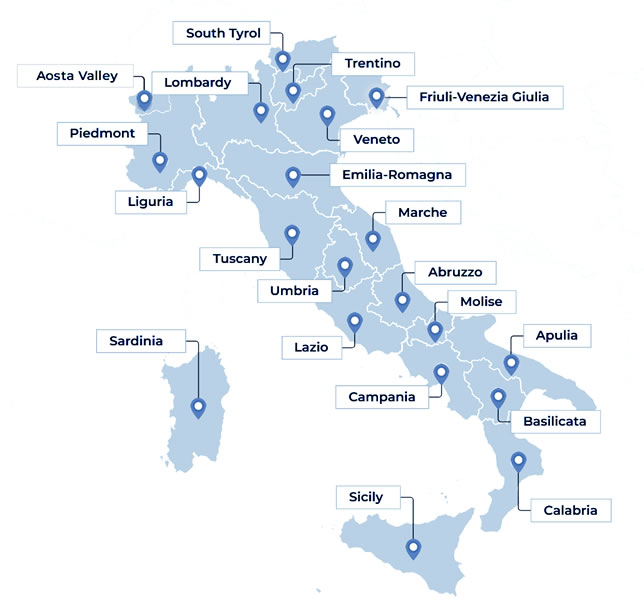
Open in Google Maps and find out what to visit in a place.
Go to: Abruzzo | Aosta Valley | Apulia | Basilicata | Calabria | Campania | Emilia Romagna | Friuli Venezia Giulia | Lazio | Liguria | Lombardy | Marche | Molise | Piedmont | Sardinia | Sicily | South Tyrol | Trentino | Tuscany | Umbria | Veneto

Text and images are available under the Creative Commons Attribution-ShareAlike License 4.0; - italystudynotes.eu - Privacy